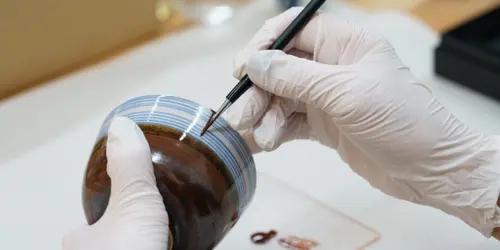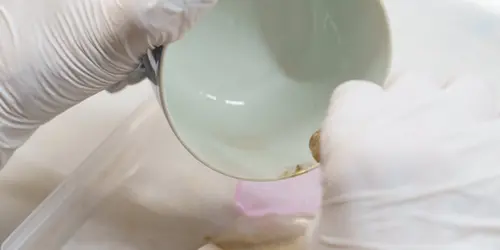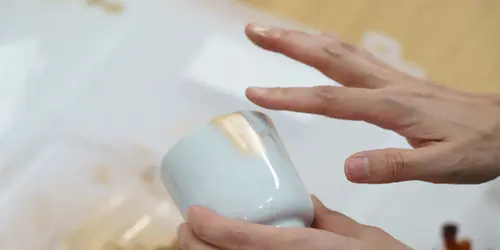Kintsugi, making cracks beautiful
- Shibuya City
- English
- 90 minutes
- Youtube
Behind the Japanese art of Kintsugi lies a whole philosophy that encourages us to accept our weaknesses and imperfections, and to sublimate them to make them more beautiful and powerful.
Kintsugi, or the art of embracing imperfections
Kintsugi means "golden seal". In practice, it involves gluing broken pieces of ceramic together with resin, then covering them with a thin layer of gold. Kintsugi requires a certain amount of manual dexterity and concentration. Although there are Kintsugi artists who take the art to higher dimensions, as an art form it is accessible to all.
Above all, Kintsugi is a philosophy. And when you manipulate the damaged pieces of your plate or bowl to put them back together, what you are doing is embracing that philosophy. What Kintsugi teaches us is that nothing is eternal, nothing lasts forever, and that it is normal for the things we are surrounded by in our lives, whether tangible or intangible, someday to break.
But breaking doesn't mean the end. With Kintsugi, you learn that dedicating a little energy and heart to picking up the pieces allows you to bring something back to life in a way that is even more beautiful than before.
Kintsugi, an extension of the Japanese concept of wabi-sabi
Kintsugi teaches us to accept imperfections (of others, of ourselves, of the world) and frailties. Instead of hiding the cracks and making them invisible, they are brought to the fore with the noblest material of all, gold. The philosophy and aesthetics underlying Kintsugi seem far from our Western standards and our modern societies which prefer perfection, youth and continuity.
But in Japan, the beauty of imperfection has long been emphasised, with the concept of wabi-sabi, which emerged in Japan in the XIVᵉ century, and is intimately linked to Buddhism and the art of tea. "Wabi-sabi is the beauty of imperfect, impermanent and incomplete things. It is the beauty of modest and humble things. It is the beauty of atypical things." (Leonard Koren).
An introduction to the art of Kintsugi
It is commonly stated that Kintsugi is a time-consuming art form and a complex craft. However, we have good news for individuals who desire to experience Kintsugi but lack the resources to undertake a comprehensive repair project. We offer Kintsugi Discovery workshops, where you can learn about the most interesting part of kintsugi repair: dusting gold powder.
You'll make plates or chopstick rests that have been pre-repaired, and you'll put a gold coating on their scars. Once the object dusted with gold has cured, you will be able to take it home (You can pick-up the object at the studio or have it shipped to your address – postal fee not included).
Choose between:
Traditional Kinstugi Style Workshop: In this workshop, you will have the opportunity to experience the most impressive step of traditional kintsugi repair: the dusting of gold powder over the restored parts. Traditional kintsugi repair is based on the use of urushi (the sap of the lacquer tree). Urushi requires a lot of time to cure and it is not possible to complete a whole kintsugi repair with urushi within an hour. However, for the discovery workshop, we restore the objects in advance so that you can directly apply the finishing layer.
Kintsugi Style Workshop: For those who easily get rashes from lacquer or who want to take their creations home immediately, we recommend the "Kintsugi-style" workshop, which does not use urushi lacquer. Instead of using the traditional method, you can easily create kintsugi-like pieces using synthetic resin. Therefore, instead of tableware to serve food, chopstick rests, accessories, and key chains are made.
Location



